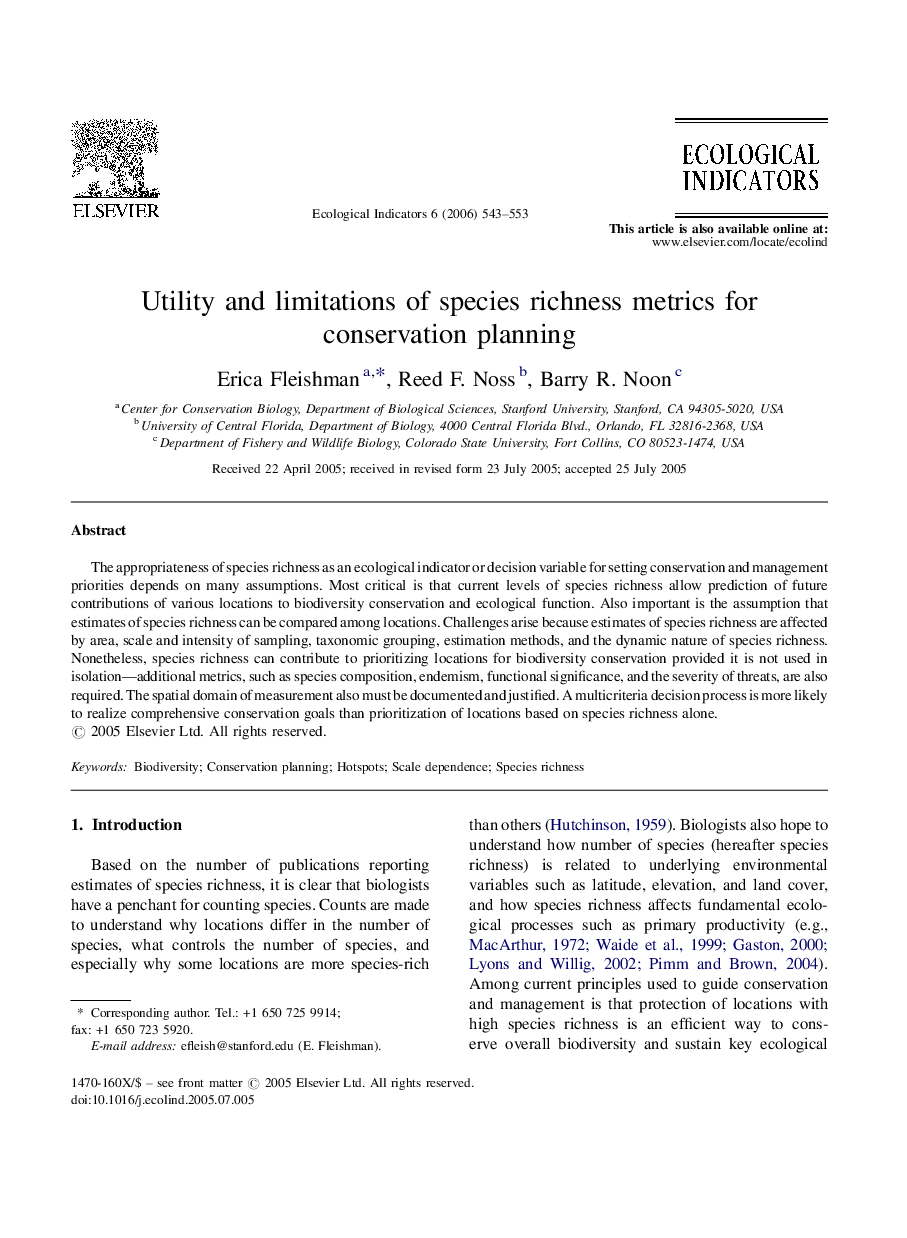| Article ID | Journal | Published Year | Pages | File Type |
|---|---|---|---|---|
| 4374730 | Ecological Indicators | 2006 | 11 Pages |
The appropriateness of species richness as an ecological indicator or decision variable for setting conservation and management priorities depends on many assumptions. Most critical is that current levels of species richness allow prediction of future contributions of various locations to biodiversity conservation and ecological function. Also important is the assumption that estimates of species richness can be compared among locations. Challenges arise because estimates of species richness are affected by area, scale and intensity of sampling, taxonomic grouping, estimation methods, and the dynamic nature of species richness. Nonetheless, species richness can contribute to prioritizing locations for biodiversity conservation provided it is not used in isolation—additional metrics, such as species composition, endemism, functional significance, and the severity of threats, are also required. The spatial domain of measurement also must be documented and justified. A multicriteria decision process is more likely to realize comprehensive conservation goals than prioritization of locations based on species richness alone.
